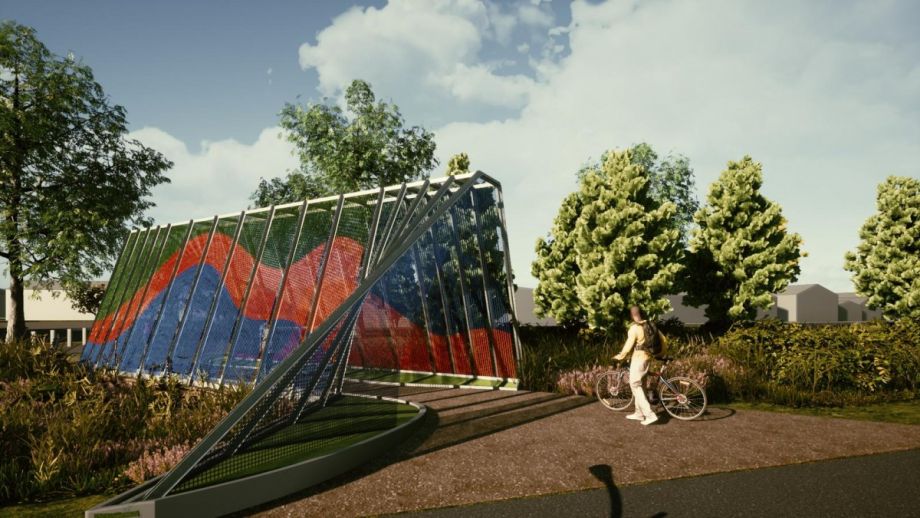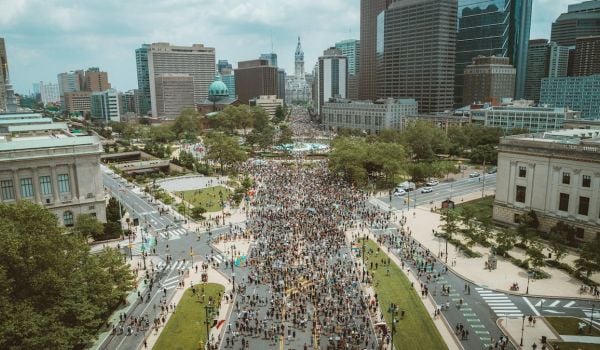For every project in the built environment, who gets to tell their story and when can make the difference between a project that succeeds and one that harms a community. For Bryan Lee Jr. and others in the design justice movement, the community must be integral to the process from the beginning. Not only for an evening in a community center making comments to completed designs, but working alongside the architects.
One firm believes it has found a formula that works to get community input: hiring residents as community design advocates (CDAs).
“CDAs join the design team before most decisions have been made and give their input and those of the broader community,” explains Lee, principal at Colloqate Design, a New Orleans-based multidisciplinary architecture and design justice firm.
“Each CDA is paid for their time, with stipends to support engagement in whatever way they see fit for their communities. The CDAs meet with community members weekly, and all of that information is collected and developed through the design at the concept phase.”
CDAs are not only asked to talk about design, but also about their own experiences and the nuances that get missed in public consultations where the project is set and residents can only ask questions or give opinions. “Asking questions at general public meetings to generate the same rote narratives and themes, means that you’re not fully allowing for the widest breadth of opinion and experiences to be flushed out,” Lee explains.
When we acknowledge that inequities and injustices are inherent in our built environment, we begin to understand why firms like Colloqate exist. They fill a void in a profession that often distances itself from the divisions their designs create. When an architect or designer is asked to create a project in a city, they either propose an idea informed by their understanding of the story of a place, or the story is handed to them by those in power. When the real experts of a place are excluded, that omission of their story is problematic.
Between 2017 and 2019, Colloqate’s Paper Monuments public art and history project sought to include New Orleanians in creating new storytelling around their collective visions and omitted histories. It was an invitation to write new narratives and to express those stories through new monuments. This project became part of a larger discussion which is still ongoing: If oppressive systems use symbols to link the past to the present and declare their values, then why can’t systems built with an equitable intention use symbols to do the opposite?
“Part of our process of Paper Monuments was wholly about recognizing and reconciling that individuals do not create anything alone,” reminds Lee. “So what does it mean for us to move away from lionizing individuals, and the singular star, and think about the monuments to movements, places, collectives, and events?”
Beyond monuments, architecture and urban planning in general are in need of a wider move away from the top-down and selective approach, to a bottom-up and collective vision. By centering those voices who have been muted, richer, more accurate, and equitable stories can be told.
“The first and foremost thing is how do we honour those who have a lived experience of place and hear that voice,” says Lee. “There are thousands of people who have lived in particular neighborhoods for years, and those are the voices that will tell us what means the most. It shouldn’t be about the designers, the artists, or the politicians,” says Lee. “It really needs to be about those who are most marginalized.”
That is why Colloqate works with communities in the early stages of projects. The more they show the profession it can be done, the more getting involved will be expected by residents.
Currently, Colloqate is working with community design advocates on Midland Library in Portland and restorative justice space in Dallas.
In contrast to the limitations of public consultations, the CDAs provide Colloqate with thousands of comments. In the Dallas project alone, they are only at the beginning stages and they already have 4,000 comments to work with. From there, the most salient and suitable ideas are worked into the project to reduce the chances that the final outcome is not representative of what the community wants.
“The project in Dallas, which deals with a former jail, allows us to think about restorative justice through the lens of those who have been most harmed by that space. We were able to hire CDAs that were formerly incarcerated and hire others who were part of the broader network of the city and they were working together to ask questions of their own specific communities,” explains Lee.
The reason for bringing community members onto the team, and not merely getting their input after a design has already been made, is to encourage radical design justice practice. Lee hopes this network of CDAs will continue to grow through each of Colloqate’s projects and become a standard in the design profession so more communities are empowered to influence outcomes.
“In both projects, CDAs were brought in to distill the themes, validate narratives across the board, and were ultimately part of the design team,” says Lee. “This allows us the space to be corrected when we’re moving off course, and have an accountability mechanism for ourselves as a design team.”
Since 2015, Lee has been on the leading edge of a social justice movement that seeks to make architecture more accountable. The movement grew quickly since then, but lately has reached more interested architects and design academics. Design as Protest (DAP) began as a yearlong organizing effort, involving 250 design professionals and design advocates across the United States and Canada. They examined how injustice can be challenged through the built environment. Issues such as ending the prison industrial complex, defunding and reallocating the police, and advocating against architecture projects that are hostile to communities of color. It all comes back to whose voice and vision is deemed important to tell a different story and push for different outcomes.
The Black New Deal was a studio Lee taught in 2020 at the Harvard Graduate School of Design that examined how “liberation theologies of Black movements from the late 19th century to the present” could be applied to contemporary urban design and architecture. “From the Pan African movement to the Black Panther movement, the Washington Carver community schools movement, and the bus porters in Chicago. All of these different movements had a series of demands around justice in the built environment even if we didn’t necessarily frame them in that fashion,” Lee says. “Look at the demands from the Black Panthers. Housing is a huge thing, freedom to determine how people move through space, how we think about the location of retail and commerce to see what’s the adjacency to employment. The Black Panthers talked about removing capitalist intentions within communities which are the standard tropes around what gentrification is and what it means for capital to come into a neighborhood and wash away cultural institutions. The ethos of design justice is simply that for every injustice in this world there is an architecture, a plan, a design, that’s been built to sustain that injustice, and for so much of our work power is vested in land.”
When Lee reflects on all of that work since 2015, he is unwavering. Regardless of all that happened in 2020 and 2021, such as the murder of George Floyd and the protests in its aftermath, or the malevolent forces rallying against anti-racism in the political and media spheres, Lee’s focus is undeterred and positive.
“My intention is to dismantle the profession of architecture in the way that it currently operates. I see the broader design justice movement setting up those dominoes,” Lee says. He’s pleased to see more people in the profession becoming racially conscious.
“It doesn’t have to be a few of us carrying that torch. The more of us there are, the harder it will be to stop us. So I’m ready to start the next round.”
This story is a part of The Future of Monumentality, a series exploring the role of monuments in public space in the 21st century. This series is generously underwritten by the High Line, a nonprofit organization and public park on the West Side of Manhattan whose mission is to reimagine the role public spaces have in creating connected, healthy neighborhoods, and cities.














